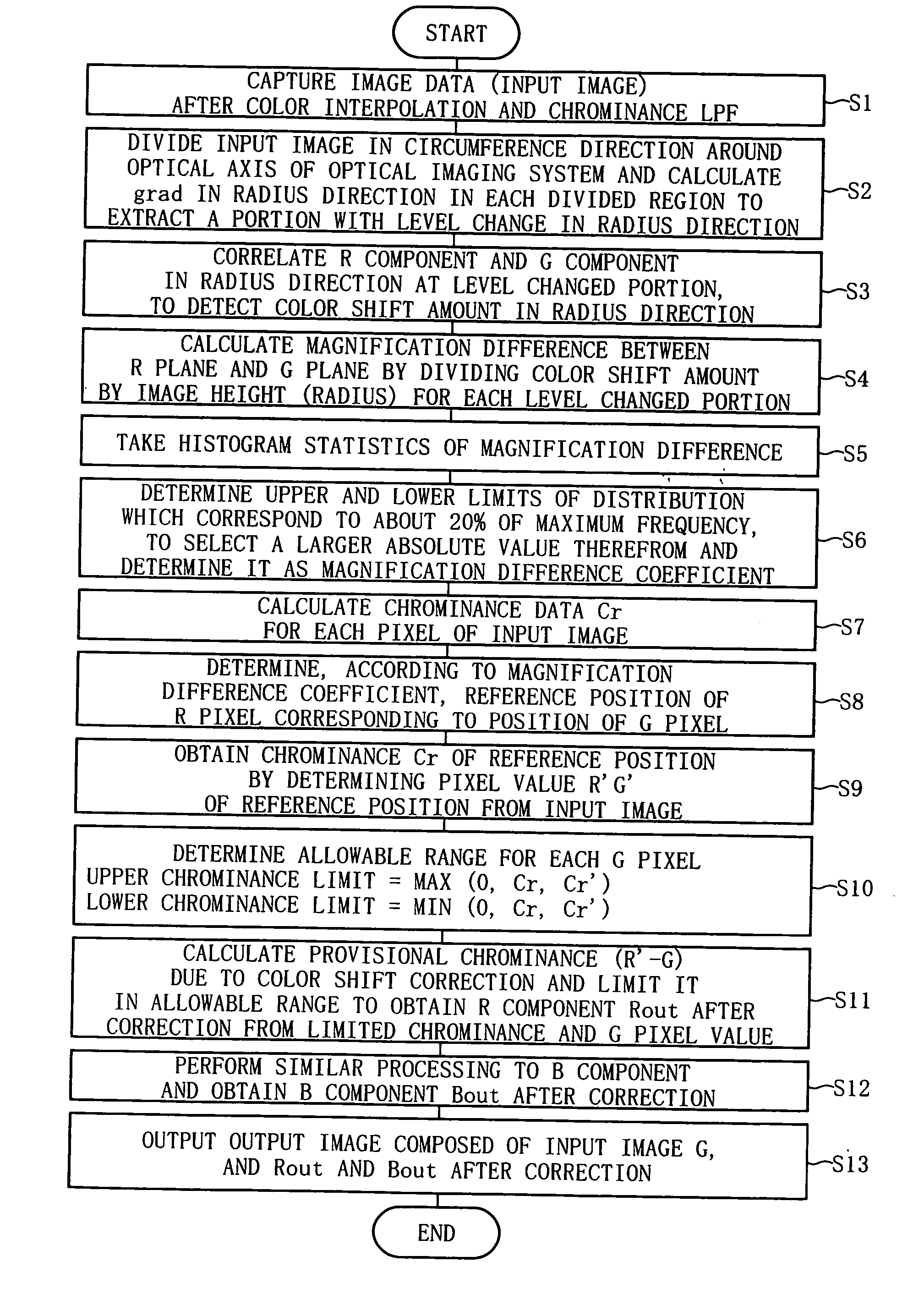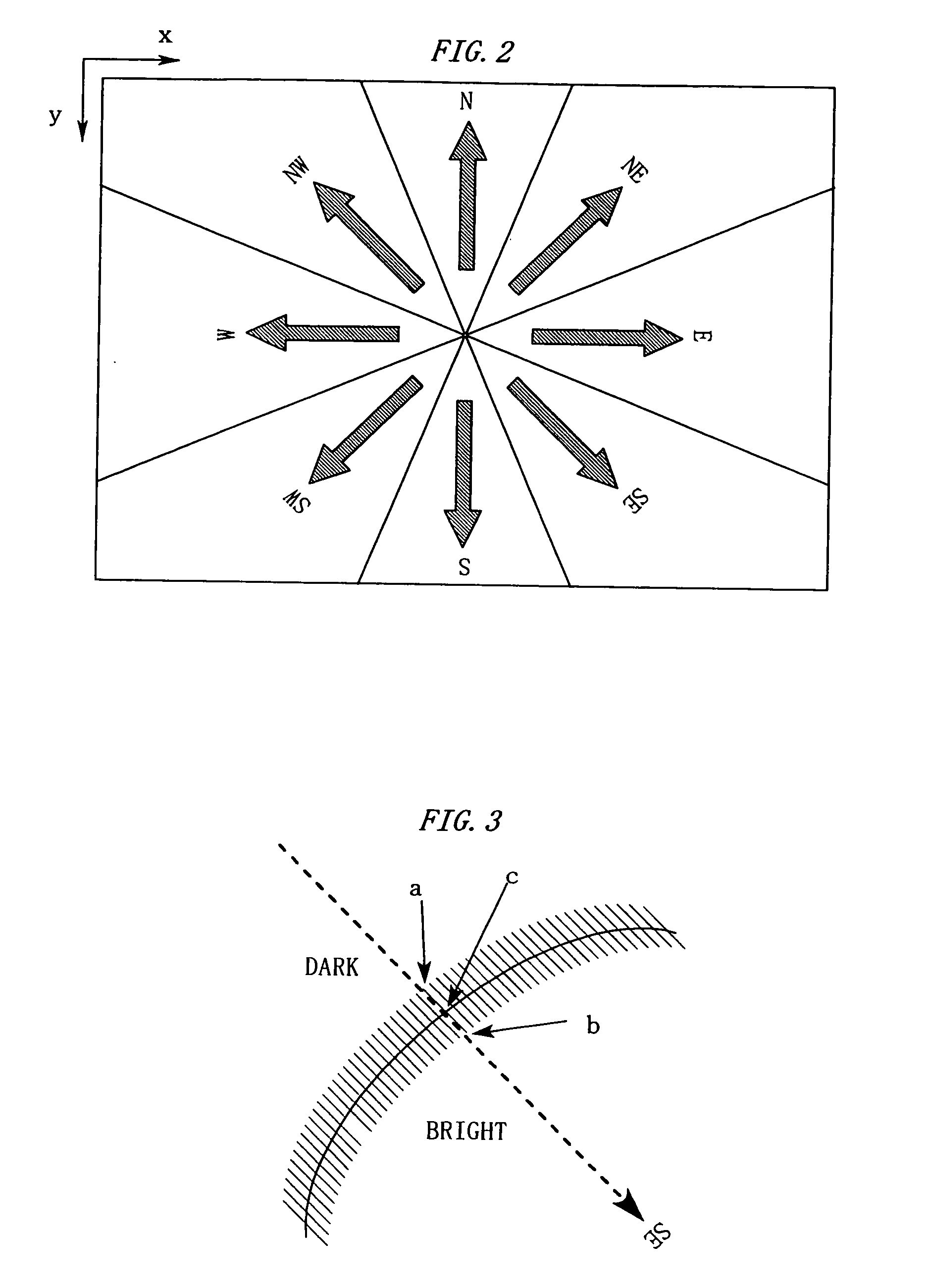Image processing device having color shift correcting function, image processing program and electronic camera
a technology of image processing and color shift correction, which is applied in the direction of single pick-up device signal generators, instruments, signal generators, etc., can solve the problems of detection errors, detection detection errors, and easy loss of point symmetry, so as to achieve optimal color shift correction
- Summary
- Abstract
- Description
- Claims
- Application Information
AI Technical Summary
Benefits of technology
Problems solved by technology
Method used
Image
Examples
first embodiment
[0082]FIG. 1 is a flow chart for explaining the computer operation by an image processing program. It is possible to cause the computer to function as an image processing device by the image processing program.
[0083] The operation in a first embodiment is explained below following the step numbers shown in FIG. 1.
[0084] [Step S1]
[0085] A computer captures image data (hereinafter, referred to as an “input image”) shot by an electronic camera via a recording medium or a communication interface. The input image has already been subjected to color interpolation and chrominance LPF in the electronic camera.
[0086] [Step S2]
[0087] The computer sets an optical axis center of an optical imaging system in the screen of the input image. Usually, the screen center of the input image is set as an optical axis center by default. In addition, it may also be possible for the computer to acquire the position of the optical axis center from attached information (Exif information etc.) of the input...
second embodiment
[0159]FIG. 7 and FIG. 8 are diagrams for explaining the second embodiment.
[0160] In general, the optical axis center of an optical imaging system is located substantially at the screen center of image data. Because of this, usually, the chromatic aberration of magnification is produced in a point symmetric manner with respect to the screen center.
[0161] However, in some of optical imaging systems (shift lenses or hand movement compensated lenses), the optical axis center of the optical imaging system does not necessarily coincide with the screen center of image data. Further, a case is supposed where the optical axis center of an optical imaging system comes not to coincide with the screen center of image data any longer after the image data is subjected to trimming (cropping) by processing on an electronic camera or a computer. If any manufacture error should occur in a lens, there is the possibility that the chromatic aberration of magnification is not produced in a point symmet...
third embodiment
[0170] The third embodiment describes a computer equipped with the image processing function of the present invention.
[0171] As shown in FIG. 9, a computer 10 includes a control part 1, an external interface part 2, and an operation part 3. The control part 1 records in advance a program for performing the image processing of the present invention. Further, the external interface part 2 interfaces with an external device such as an electronic camera via a predetermined cable or a radio channel. The operation part 3 is equipped with a keyboard, a mouse, etc., although not shown.
[0172] In the computer 10 having a configuration as shown in FIG. 9, it is possible for the external interface part 2 to capture an image from an external device such as an electronic camera, not shown, in accordance with the direction of the control part 1. The operation part 3 accepts various user operations. The state of the operation part 3 is detected by the control part 1.
[0173]FIG. 10 shows a rough f...
PUM
 Login to View More
Login to View More Abstract
Description
Claims
Application Information
 Login to View More
Login to View More - R&D
- Intellectual Property
- Life Sciences
- Materials
- Tech Scout
- Unparalleled Data Quality
- Higher Quality Content
- 60% Fewer Hallucinations
Browse by: Latest US Patents, China's latest patents, Technical Efficacy Thesaurus, Application Domain, Technology Topic, Popular Technical Reports.
© 2025 PatSnap. All rights reserved.Legal|Privacy policy|Modern Slavery Act Transparency Statement|Sitemap|About US| Contact US: help@patsnap.com



